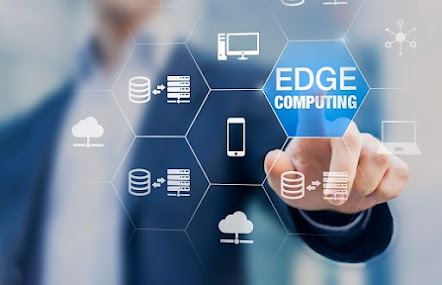Featured
- Get link
- X
- Other Apps
What is an ERP
"An ERP must have a centralized database, maintain the coherence and uniqueness of the data, as well as its components must be interrelated."
Introduction to the world of business management tools
To fully manage a company, it is not only valid with an ERP,
you will need the different instruments that encompass its management, the
definition of each of them is.

2. CRM
(Customer Resource Planning) : business management software, which controls all
the processes of acquiring a client, marketing campaigns, sales process,
guarantees and after-sales.
3. HCM (Human
Capital Management) : business management software, which controls all human
resources processes, personnel selection, training, employee development, ...
4. PAYROLL :
business management software, which controls all processes related to employee
payroll ....
5. BI
(Business Intelligence) : analysis software that, based on the information that
the different tools have, helps to quickly analyze the company's situation,
showing the fundamental indicators that the company has decided.
6. BPM
(Business Process Management) : process modeling tool, which is capable of
combining in a single one all the processes of the previous tools, combining it
in a single compact and heterogeneous process, it contains tools that are
capable of determining the bottlenecks of the processes and how to solve this
bottleneck.
What is an ERP?
Definition and characteristics
The term corresponds to ERP stands for Enterprise Resource
Planning (Enterprise Resource Planning). It can be defined as an integrated
management system for the set of operational activities within a Company .
The main characteristics that an ERP must meet include:
1. Be
Integrated. The different elements and business processes are managed by
interrelating with each other, sharing information.
2. Be
configurable. An ERP system must allow specific configurations based on the
needs of the Company and must be able to be modified over time as their needs
evolve.
3. Modularity
. An ERP must be distributed in different modules corresponding to the
different business areas that they affect, without forgetting that these areas
are interrelated, sharing information and processes.
Technical aspects
From a technical perspective, ERP systems are translated
into software used by different company departments. This software has some
basic features.
1. A
centralized database where the information used by the different processes is
stored.
2. The
stored data must be consistent , common and accessible. For example, modules
that use the same customer data must be able to extract it from a single
source.
3. The
elements of the ERP are interrelated . The objective is to be able to carry out
the operational processes of the company. For example, to carry out a sale
operation, the customer's data is related to the data of the product or service
offered.
Components (edit)
It is considered that all business software, in order to be
called ERP, must have the following modules available:
1. I
Financial . The main functionalities of this module are general accounting,
budget management, collection and payment management, fixed assets, cash flows
and cost management.
2. Sales .
It refers to the processes associated with sales operations to customers and
the information necessary for them to carry them out.
3. Purchases
. It consists of the processes associated with the supply of materials required
by the organization, as well as the relevant information from the suppliers to
carry out these operations.
4. Logistics
. Associated with the company's materials management processes, movements,
storage, traceability and distribution. Optimizes the flow of materials through
the supply channel, reducing costs and improving service.
5. Production
planning . It consists of the set of processes that allow a company to
manufacture and monitor products. It will optimize the processes associated
with the transformation of raw materials into finished products.
This does not mean that every company that uses ERP must
activate and / or use each of these modules.
Additionally, there are another large number of modules that
are increasingly relevant in organizations, although traditionally they are not
considered
critical to assess the software as an ERP.
• Projects
. Module oriented to project management, not manufactures, with task, resource
and timing management.
• Human
Resources . It consists of the set of processes associated with the company's
employees.
Lifecycle
Like any information system, it is possible to analyze the
different phases through which an ERP passes within a company over time.
In the first stage, prior to start-up and use of the system,
the adoption, acquisition and implementation phases will be discussed. The
second stage will consist of the phases of use and maintenance, evolution and,
finally, abandonment.
- Get link
- X
- Other Apps
Popular Posts
Beauty and Technology of Digital Landscape
- Get link
- X
- Other Apps
EDGE-CLOUD: The 5G Pathway to Serviced Operating Technology
- Get link
- X
- Other Apps
.jpg)
